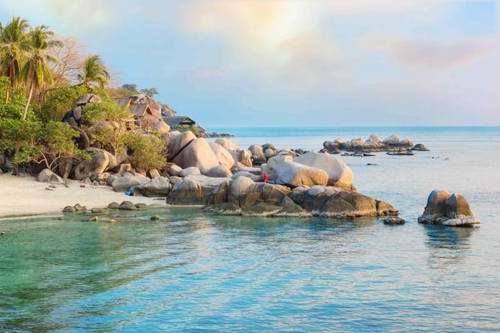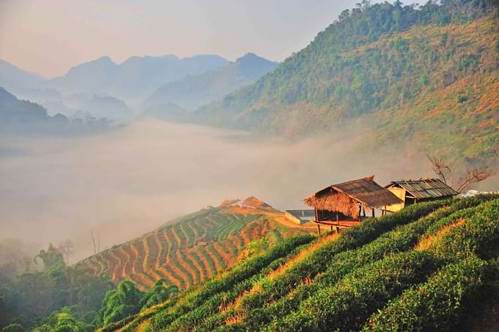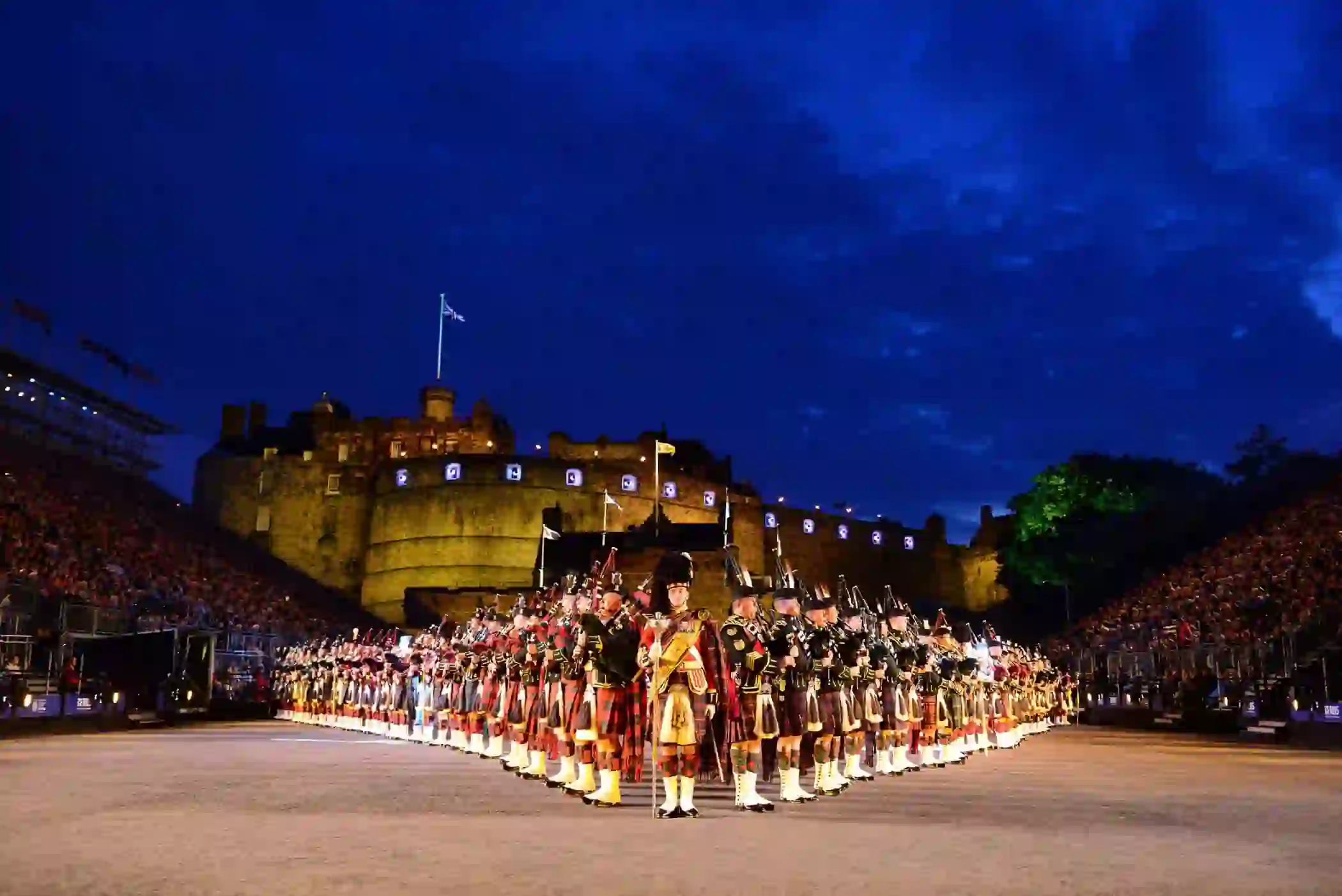
The absolute best time to visit Thailand (according to region)
Choosing the right time to visit this Southeast Asian gem depends on religious celebrations, tourist numbers, and weather. Let us help you plan your dream holiday.
Thailand is an exceptional travel destination, offering paradise beaches, vibrant and fresh cuisine, friendly locals, and fascinating temples. But when is the best time to go to Thailand? Like many countries in Southeast Asia, the weather is characterised by tropical patterns of warmth and humidity. As the monsoon season strikes different geographical regions of the country at different times, it isn’t always straightforward to determine when the monsoon season falls in Thailand.
Generally speaking, Thailand experiences two different monsoon seasons. Between June and October, monsoon season affects the northern, central and south-western parts of the country, and between October and December, the monsoon season affects the south-eastern coast and Gulf of Thailand. November in Thailand marks the end of the rainy season, creating a serene atmosphere that welcomes travellers.
Another thing to keep in mind when determining the best month to visit Thailand is when other travellers might be making their way to Thailand — because those crowds can be a serious turn-off when you’re just looking to relax and unwind on holiday. Whether it’s due to others escaping winter in their home country, or simply trying to capitalise on the dry months in Thailand, most travellers head to Thailand in the dry months, beginning in November or December and ending in March, depending on the region.
Newmarket Holidays mainly operates escorted holidays in the central region, meaning travellers can hop from the city delights of Bangkok to the waterfalls of Erawan to the beaches of Hua Hin.
Weather and peak visiting times aside, another thing to factor into figuring out when to visit Thailand is its religious celebrations. As Thailand has a rich cultural history of Buddhism — with 93% of people in Thailand identifying as Buddhist – it’s a great idea to observe the significant cultural dates on the calendar, so that you can experience and observe some of the country’s most colourful, atmospheric religious celebrations.
To find out more about the best time to go to Thailand, based on weather, we have broken it down by region. Let’s start with the central region:
Central Thailand: Bangkok, Damnoen Saduak Floating Market, Erawan National Park, Hua Hin

If you’re wondering when the best time to visit Bangkok is, it’s anytime between December and March. During these months, the weather isn’t rainy and it isn’t too hot. If you wait til April, temperatures can soar to 35° each day. Additionally, as Lunar New Year falls in late January, you might like to experience it in Bangkok, where colourful parades, lanterns, and festivals bring even more life to the city streets.
During these months, you can really make the most of the warm, dry weather by exploring Bangkok and all it has to offer. You can discover Royal Island, where the Grand Palace adjoins the Wat Phra Kaew temple with its Emerald Buddha and Wat Pho temple, which contains the gigantic Reclining Buddha. Thailand’s national Buddhist festival, Māgha Pūjā, takes place in early March (the full moon day of the third lunar month). If you are curious to see how the locals carry out their sacred rituals, prayers, and hymns be sure to visit Bangkok during March to revel in this rich religious culture.
If you’re hungry, feast at Chinatown. But if you simply want to sit and watch the world go by, board a longtail boat to explore Bangkok’s waterways and canals that weave the capital city together. You could even indulge and enjoy a dinner at the city’s 78th-floor Bangkok Sky Restaurant.
Outside of Bangkok lies plenty of incredible day trip opportunities, perfect for the dry months. Many curious travellers favour the colourful floating markets of Damnoen Saduak where locals buy fresh produce from the traders on the boats. There’s also Kanchanaburi, where 12,000 prisoners sadly perished during World War II building the Death Railway. Here, you can commemorate them by visiting the Allied Cemetery and the Thailand–Burma Railway Centre. For a lighter experience, check out the striking Erawan National Park, which is home to a cascading seven-tiered waterfall.
But if you have come to Thailand during the drier months, chances are you are quite eager to catch a swim at one of the nation’s stunning beaches. Just 120 miles out of Bangkok lies the resort town of Hua Hin. Located on the Gulf of Thailand, this region is best seen between November and January, because the weather will be dry, with plenty of sunshine. Just remember that other travellers will be observing the same weather patterns, so the beaches might be a little busy. Along with taking a dip at one of the many beaches, you can embark on a sightseeing tour of Hua Hin, which includes a short walk up Monkey Mountain to marvel at the Big Buddha and the panoramic views that come with it.
If you’re finding the weather to be a little on the hot side, you’ve got plenty more opportunities to swim. Some 40 miles from Hua Hin is Sam Roi Yot National Park, where you can spot several species of rare birds, dramatic limestone mountains, idyllic beaches, a traditional fishing village, and best of all, a stalagmite-filled cave. This is reachable only by boat, and it’s well worth it. This time of year will be an incredible time to enjoy a splash in the warm, clear water.
Southern Thailand and Islands: Phuket, Koh Samui

One of the best reasons to travel all the way to Thailand is to experience the idyllic beaches. Some of the most popular destinations in this region include Phuket, renowned for its nightlife, scuba diving, and markets, and Koh Samui, known for its coconut-lined shores and Big Buddha.
To make the most of the sunshine and rain-free days, head to Southern Thailand and its islands during the months of November and February, the months will certainly be the best time to visit Koh Samui and the best time to visit Phuket. Try to avoid May to October, if you can, as the wet season can make sunbathing and swimming a little bit tricky.
Northern Thailand: Chiang Mai

If you’ve always dreamed of heading to Northern Thailand, Chiang Mai is – the region’s largest city – the place to be. This region is known for spirituality retreats, temple complexes, and misty mountains. Plus if you’re looking for a cooler change to your Thailand trip, Chiang Mai will give you that. While temperatures are warm during the dry season, remaining between 29° and 33°, at night they can dip to 14° – so be sure to pack a light jacket or jumper.
To avoid the rainy season in Chiang Mai, ensure your visit doesn’t fall between the months of July to October. Instead, aim to travel in Northern Thailand between November and February, so that you can enjoy cooler, dry weather.
Experience the very best of Thailand on an escorted tour with Newmarket Holidays. Let us take you there.






